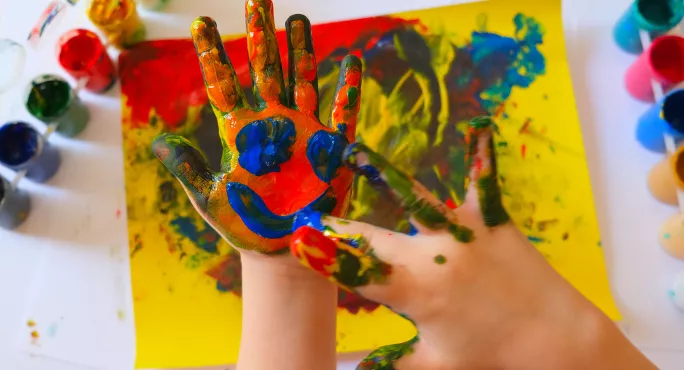Expressive arts and the case for a central role in Scottish primaries

The expressive arts play a pivotal role in shaping identities, fostering connections and enriching lives.
Within education, the expressive arts serve as a powerful means for children and young people as they seek to express themselves and engage in self-discovery, in addition to supporting them in nurturing a deep connection with the world around them.
The Scottish government, along with agencies such as Education Scotland and Creative Scotland, has often reaffirmed its commitment to expressive arts education through various policies and initiatives, including A Collaboration for Creativity (2021), which emphasises the importance of making cultural and artistic activities accessible and affordable to all children across the country.
Financial and geographic barriers
However, barriers such as financial constraints and geographic disparities too often perpetuate the inequality of access to cultural and artistic education opportunities. Such obstacles can have a significant impact on the variety of activities and resources available to schools.
Recent research projects on expressive arts in Scotland, collectively termed ”the state of the arts”, have provided valuable insights into the challenges facing expressive arts education in primary schools.
These projects have highlighted discrepancies in provision, a lack of teacher confidence and the absence of structured approaches to teaching expressive arts across the country.
While there is widespread acknowledgement of the importance of the expressive arts - they have been subject to a “pilot review” in Scotland of late - translating this into meaningful classroom experiences remains a formidable task.
- Languages: Modern language assistants disappear from Scottish state schools
- Wellbeing: 6 things we did to improve mental health in our school
- CfE: Secondaries ‘starting again’ as pupils lack ‘common knowledge base’
The projects collectively highlighted the absence of a structured, coherent, whole-school approach to teaching expressive arts in primary schools.
Responsibility for teaching expressive arts often falls on individual class teachers, which can result in a lack of consistency, with children’s access to the arts dependent on the teacher, and their levels of interest, experience and confidence when teaching the subject.
This lack of consistency also puts challenges in the way of sequential and meaningful expressive arts education.
‘Squeeze’ on arts from literacy and numeracy
An additional challenge that is more broadly experienced across the curriculum in both primary school and initial teacher education (ITE) is the “squeeze” on the expressive arts: their presence within a school potentially faces competition from other more “pressing” areas such as literacy and numeracy.
While expressive arts are increasingly being taught using interdisciplinary approaches, concerns have arisen that they could become lost within the sciences, be open to tokenism or even that the quality of teaching of these subjects is inconsistent and ad hoc.
We must not lose sight of expressive arts education in enhancing overall pupil learning and engagement. Indeed, there was considerable interest last year in a new Education Scotland guide showing “innovative and creative ways” to connect the teaching of numeracy with the expressive arts.
Need for more arts CPD in primary sector
The absence of primary teachers undertaking comprehensive professional learning opportunities in expressive arts education was a significant issue across all projects.
Many teachers expressed feeling ill-prepared to teach the expressive arts, citing limited training and engagement in the full range of expressive arts during their ITE programmes. While some teachers feel more confident teaching art, they may lack confidence in others such as dance or music.
This unevenness often correlates with the frequency with which the subjects are taught, and the level of prior experience or education teachers have in each area.
It should be noted, however, that where teachers expressed increased confidence in teaching the arts, it did not necessarily indicate better quality or more regular engagement of provision in schools.
To address these challenges, collective efforts are required. Collaborative initiatives involving higher education institutions, local authorities, arts organisations and schools can empower teachers to confidently design and implement expressive arts lessons in their classes and schools.
Access to the arts for pupils is not just an aspiration but a moral imperative. Investing in professional learning and fostering creative partnerships can promote the value of expressive arts in education - and help safeguard future generations of creative thinkers and lifelong arts participators.
Dr Angela Jaap is a senior lecturer in teacher education at the University of Glasgow and Dr Anna Robb is a senior lecturer (teaching and research) at the University of Dundee
For the latest Scottish education news, analysis and features delivered directly to your inbox, sign up to Tes magazine’s The Week in Scotland newsletter
Keep reading for just £1 per month
You've reached your limit of free articles this month. Subscribe for £1 per month for three months and get:
- Unlimited access to all Tes magazine content
- Exclusive subscriber-only stories
- Award-winning email newsletters
topics in this article



